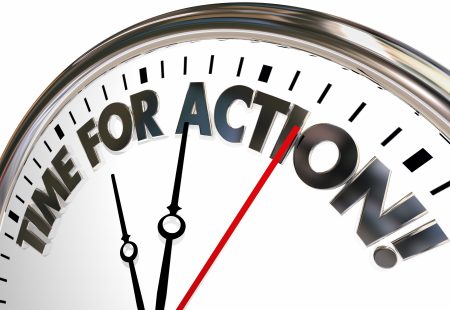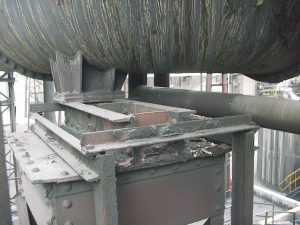- Home
- About
- Training Courses
- ASME Courses
- API Courses
- API 510 Pressure Vessel
- API 570 Process Pipework
- API 653 Aboveground Storage Tank
- API 936 Refractory Personnel
- API 580 RBI Online
- API 580 RBI Classroom *New*
- API 571 Corrosion & Materials Online
- API 571 Corrosion & Materials Classroom *New*
- API 577 Welding Inspection & Metallurgy Online
- API 510 CPD Training
- API 570 CPD Training
- API 1169 Pipeline Construction
- API SIFE Source Inspector Fixed Equipment
- API SIRE Source Inspector Rotating Equipment
- E-Learning
- Technical Courses
- API CPD Recertification
- Training Courses
- Technical Hub
- Virtual Training
- FAQs
- Contact
- Online Training Portal
- Shop

- In: Training | On: Sep 18, 2020
API 510 Pressure Vessel Inspector Training – Remaining Life and Intervals
What’re the rules on API 510 Inspection Intervals?
API 510’s views on most subjects represent common US practice. One of these is the issue of inspection intervals (or periodicity). They are presented in API 510 as maximum inspection intervals and can be replaced by RBI when justified, but it is common for plant owners to just follow them as they are.
Try these three quiz questions;
Q1. External inspection of a vessel in non-continuous service.
What is the API 510 recommended period between external inspections for a vessel that has a remaining life of 20 years but is only in use 50% of the time?
a) 15 years
b) 10 years
c) 5 years
d) None of the above
Q2. Internal inspection interval
A vessel has a projected remaining life of 15 years of operation under its current regime of being in use 50% of the time. The remainder of the time it is purged, vented then isolated from the process fluid and filled with nitrogen. What is the API 510 internal inspection interval?
a) 5 years
b) 7 ½ years
c) 10 years
d) 75 years
Q3. Internal-v-external inspection interval
A strip-lined vessel has a remaining life of 12 years. The next API 510 scheduled inspection should be after?
a) 10 years
b) 6 years
c) 5 years
d) 1000 hours
Here are the answers
Qu1. Ans c. From API 510 Sec 6. Note how the question asks for external inspection periodicity, not an internal inspection, which is different. Why do you think the external period is shorter than the internal? Well, the intervals are actually driven by internal corrosion rates. As this is an external inspection, we are inspecting the vessel based on different corrosion environment to the inside of the vessel, and therefore the external inspection is fixed at a maximum of 5 years. REMEMBER, an external visual refers ONLY to the VISUAL examination of the external surfaces. If you were to obtain ultrasonic thickness measurements from the outside of the shell, that would be classed as an onstream inspection, not an external inspection. Why is the external maximum interval less than the internal? A number of reasons really. A few are listed below;
- The external side of the vessel may be damaged by an unpredictable event which could cause a dent or gouge. Think of impact damage here. It’s been hit by a forklift, a container being manoeuvred by a crane, a careless welder with an angle grinder, a meteor falling from the sky……Okay, perhaps a bit far fetched but entirely possible! Don’t believe us – even NASA agrees! And we taught them everything they know!..kind of…well a little bit….actually we didn’t.
- An external inspection includes not just the pressure envelope of the vessel, but ancillary equipment too. There are safety aspects to the inspection of ladders, access platforms, walkways that may be part of the vessel structure. These need regular inspection to ensure structural integrity remains.
- The supporting structure of the vessel, be it saddle supports or a skirt requires inspection in case there is significant atmospheric corrosion occurring or condensation forming on the inside of the skirt. No point in having an uncorroded vessel if it’s going to collapse on its corroded supports.

- Ensuring the earth strap is secure and fit for purpose.
- There are many more!
Qu2. Ans b.From API 510 Sec 6.5 using the half remaining life principle. Note how the question wording means that it has a calendar life of 30 years if it is used 50% of the time. When the vessel is isolated from the process and filled with an inert gas such as Nitrogen, it in effect stops any corrosion degradation due to the elimination of oxygen and moisture.
When this is done, the clock on remaining life stops, and therefore the intervals of inspection can be amended.
Qu 3. Ans c. API 510 Sec 6 specifies that both internal and external intervals need to be considered.
Next internal = 10 years or ½ life (6 yrs)
External = 5 years
So the next inspection is 5 years (the question does not specify internal or external, it just says ‘next inspection’).
If you didn’t get them all correct check out our 5-minute coaching session below
WILKINSON COUTTS 5-MINUTE COACHING
API 510 Inspection Periods:
API 510 splits vessel inspections into three types:
- External inspections (meaning visual inspection of external surfaces and components)
- Internal inspections
- On-stream inspections (meaning NDT of some type) without breaking containment
You can argue that these might all happen at the same type, but API does not see it that way; it sees them as being separate activities.
External inspection periods are specified to coincide with the normal internal or on-stream inspection but be not more than every 5 years. This applies whether the vessel is in continuous or part-time operation.
Internal inspection periods are done at the lower of half the remaining corrosion life or a maximum of 10 years, whichever comes first. Different rules apply when the remaining life is less than 4 years. We’ll cover that in another factsheet.
For vessels not in continuous service that are blanked and purged so that no corrosion takes place, the inspection interval can be taken as 10 years’ service life (but you have to be sure that there will be no corrosion).
Although API 510 makes it quite clear that internal inspection is the preferred method of examination (particularly if there is localised corrosion or other types of damage) it does provide get-outs. Internal inspections may be replaced by on-stream inspections as long as certain conditions are met. Again, we’ll cover these in another post.
All this sounds rather complicated but it’s fairly straightforward once you look at it.
Our API 510 Pressure Vessel Inspector Certification training course and our ASME Plant Inspector Level 1 cover all these concepts in detail.


